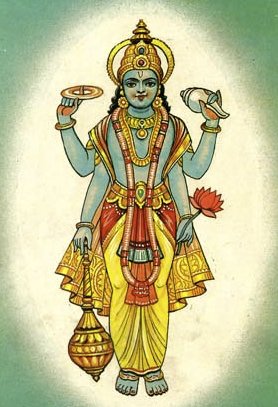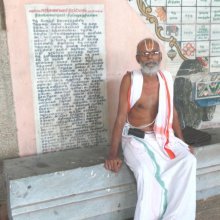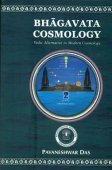Bhuloka, Bhūlōka, Bhūloka: 8 definitions
Introduction:
Bhuloka means something in Hinduism, Sanskrit, Marathi. If you want to know the exact meaning, history, etymology or English translation of this term then check out the descriptions on this page. Add your comment or reference to a book if you want to contribute to this summary article.
Images (photo gallery)
In Hinduism
Vaishnavism (Vaishava dharma)
Source: Pure Bhakti: Brhad BhagavatamrtamBhūloka (भूलोक) refers to:—Planet earth. (cf. Glossary page from Śrī Bṛhad-bhāgavatāmṛta).

Vaishnava (वैष्णव, vaiṣṇava) or vaishnavism (vaiṣṇavism) represents a tradition of Hinduism worshipping Vishnu as the supreme Lord. Similar to the Shaktism and Shaivism traditions, Vaishnavism also developed as an individual movement, famous for its exposition of the dashavatara (‘ten avatars of Vishnu’).
Languages of India and abroad
Marathi-English dictionary
Source: DDSA: The Molesworth Marathi and English Dictionarybhūlōka (भूलोक).—m (S) The earth as the habitation of man. See saptalōka.
Source: DDSA: The Aryabhusan school dictionary, Marathi-Englishbhūlōka (भूलोक).—m The earth as the habitation of man.
Marathi is an Indo-European language having over 70 million native speakers people in (predominantly) Maharashtra India. Marathi, like many other Indo-Aryan languages, evolved from early forms of Prakrit, which itself is a subset of Sanskrit, one of the most ancient languages of the world.
Sanskrit dictionary
Source: Cologne Digital Sanskrit Dictionaries: Cappeller Sanskrit-English DictionaryBhūloka (भूलोक).—[masculine] the terrestrial world.
Source: Cologne Digital Sanskrit Dictionaries: Monier-Williams Sanskrit-English DictionaryBhūloka (भूलोक):—[=bhū-loka] m. (ifc. f(ā). ) the terrestrial world, earth, [Kathāsaritsāgara; Mārkaṇḍeya-purāṇa] (cf. bhūr-l)
[Sanskrit to German]
Sanskrit, also spelled संस्कृतम् (saṃskṛtam), is an ancient language of India commonly seen as the grandmother of the Indo-European language family (even English!). Closely allied with Prakrit and Pali, Sanskrit is more exhaustive in both grammar and terms and has the most extensive collection of literature in the world, greatly surpassing its sister-languages Greek and Latin.
Kannada-English dictionary
Source: Alar: Kannada-English corpusBhūlōka (ಭೂಲೋಕ):—[noun] the planet which we live on.
--- OR ---
Bhūḷōka (ಭೂಳೋಕ):—[noun] = ಭೂಲೋಕ [bhuloka].
Kannada is a Dravidian language (as opposed to the Indo-European language family) mainly spoken in the southwestern region of India.
See also (Relevant definitions)
Starts with: Bhulokakailasamahatmya, Bhulokamalla someshvara, Bhulokasuranayaka.
Full-text (+1): Bhurloka, Padva, Bhulokasuranayaka, Bhulokakailasamahatmya, Bhumiloka, Bhuvarloka, Prithvi, Andakataha, Padra, Bhu, Svarga, Loka, Sapta, Sapt, Svarloka, Hindu Temple, Brahmanda, Thillai, Brahmaloka, Satya.
Relevant text
Search found 25 books and stories containing Bhuloka, Bhu-loka, Bhū-loka, Bhū-lōka, Bhūlōka, Bhūloka, Bhūḷōka; (plurals include: Bhulokas, lokas, lōkas, Bhūlōkas, Bhūlokas, Bhūḷōkas). You can also click to the full overview containing English textual excerpts. Below are direct links for the most relevant articles:
Puranic encyclopaedia (by Vettam Mani)
Garga Samhita (English) (by Danavir Goswami)
Verse 8.13.72 < [Chapter 13 - A Thousand Names of Lord Balarāma]
Middle Chola Temples (by S. R. Balasubrahmanyam)
Temples in Tiruppugalur < [Chapter II - Temples of Rajaraja I’s Time]
Appointment of Temple Servants and Administrative Arrangements < [Tanjavur/Thanjavur (Rajarajesvaram temple)]
Destruction < [Sixth Section]
Related products




